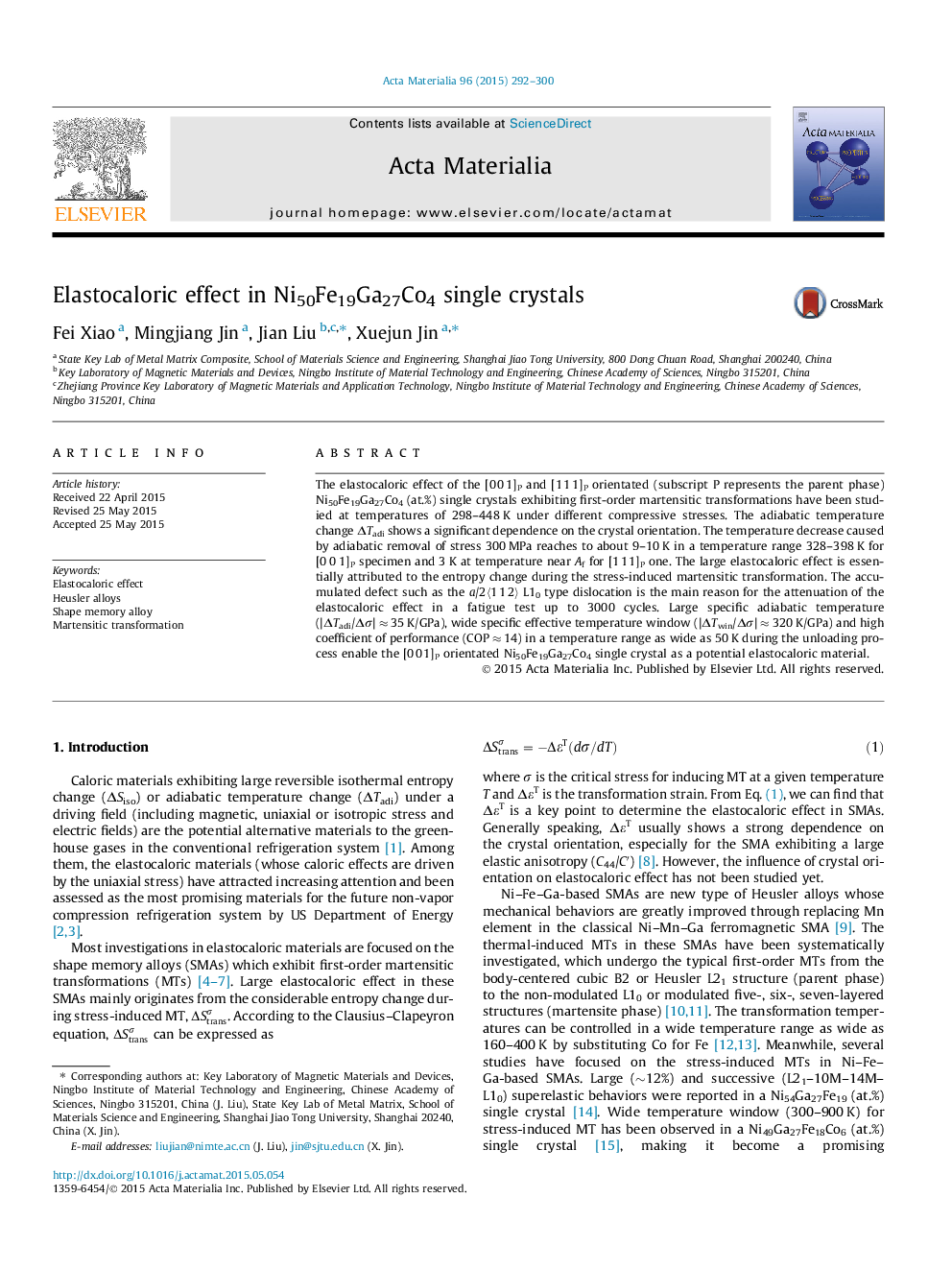| Article ID | Journal | Published Year | Pages | File Type |
|---|---|---|---|---|
| 7879809 | Acta Materialia | 2015 | 9 Pages |
Abstract
The elastocaloric effect of the [0 0 1]P and [1 1 1]P orientated (subscript P represents the parent phase) Ni50Fe19Ga27Co4 (at.%) single crystals exhibiting first-order martensitic transformations have been studied at temperatures of 298-448 K under different compressive stresses. The adiabatic temperature change ÎTadi shows a significant dependence on the crystal orientation. The temperature decrease caused by adiabatic removal of stress 300 MPa reaches to about 9-10 K in a temperature range 328-398 K for [0 0 1]P specimen and 3 K at temperature near Af for [1 1 1]P one. The large elastocaloric effect is essentially attributed to the entropy change during the stress-induced martensitic transformation. The accumulated defect such as the a/2ã1 1 2ã L10 type dislocation is the main reason for the attenuation of the elastocaloric effect in a fatigue test up to 3000 cycles. Large specific adiabatic temperature (|ÎTadi/ÎÏ| â 35 K/GPa), wide specific effective temperature window (|ÎTwin/ÎÏ| â 320 K/GPa) and high coefficient of performance (COP â 14) in a temperature range as wide as 50 K during the unloading process enable the [0 0 1]P orientated Ni50Fe19Ga27Co4 single crystal as a potential elastocaloric material.
Related Topics
Physical Sciences and Engineering
Materials Science
Ceramics and Composites
Authors
Fei Xiao, Mingjiang Jin, Jian Liu, Xuejun Jin,
